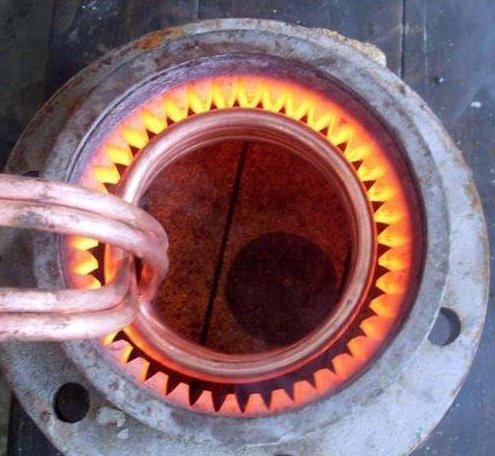- 14
- Mar
Mga panuntunan sa pagpapatakbo para sa high frequency quenching equipment
Operation rules for kagamitan sa pagsusubo ng mataas na dalas
1. Ang mga operator ng high-frequency quenching equipment ay kailangang sanayin at kwalipikado bago sila makapagtrabaho.
2. When the machine tool is started, first turn on the water supply system, then turn on the power supply of the machine tool, turn on the voltage of the first filament and the second filament, turn on the high voltage, and adjust the output voltage knob to make the voltage reach the required working voltage. (Shutdown: The high-pressure output indication returns to zero, and the reverse returns to close in turn. The water supply system is delayed for 30 minutes to close)
3. Install the heating sensor without connecting to the power supply. The connection between the pressure-reducing ring and the sensor should be in good contact. If there is oxide, use emery cloth or other methods to remove it. Adjust the gap and height between the sensor and the workpiece, and keep it parallel to the side plate. (that is, adjust the position in the X, Y, Z directions, and record the data)
4. The cooling medium of high-frequency quenching equipment is usually water and a certain concentration of quenching liquid, and the temperature of the quenching medium is less than or equal to 50 °C; for some workpieces that cannot meet the requirements, it is allowed to adjust the concentration of the quenching liquid appropriately, but it must be ensured that the hardness is qualified and there is no quenching crack.
5. Bago ang produksyon, ang quenching liquid nozzle ay kailangang maubos, at walang halatang puting foam sa quenching liquid.
6. Ang epektibong hardened layer depth ng high-frequency quenching equipment ay dapat i-sample at sukatin ayon sa mga kinakailangan sa pagsubok at mga nauugnay na pamantayan sa heat treatment process card upang matugunan ang mga teknikal na kinakailangan.
7. The operator needs to adjust the process parameters according to the requirements of the process, different sensors, and different quenching methods (fixed-point or continuous). Each batch of parts needs to be quenched 1-2 pieces before production. After testing, there are no high-frequency quenching cracks, and the hardness and the depth of the hardened layer are qualified before mass production.
8. Sa panahon ng proseso ng produksyon, dapat obserbahan ng operator ang pagbabagu-bago ng boltahe ng machine tool, ang temperatura, lugar ng pag-init at mga pagbabago sa posisyon na dulot ng kaukulang posisyon at agwat sa pagitan ng workpiece at ng sensor. Ang pagbabago sa kapasidad ng paglamig na dulot ng pagpapalihis ng spray pipe ay dapat isaayos anumang oras kung kinakailangan.
9. Ang mga high-frequency na quenched na bahagi ay dapat ma-temper sa oras, sa pangkalahatan sa loob ng 2 oras pagkatapos ng pagsusubo. Para sa carbon steel, alloy steel at mga produkto na may iba’t ibang kapal na may carbon content na ≥ 0.50%, dapat silang i-temper sa loob ng 1.5 oras.
10. Workpieces that need to be reworked should be induction normalized before rework to prevent cracks caused by re-quenching. The workpieces are only allowed to be reworked once.
11. During the production process, the operator should conduct no less than three hardness tests (before, during, and at the end of the workpiece).
12. When an abnormal state occurs during the operation, the operating power should be turned off immediately, and the workshop supervisor should be reported to the workshop supervisor for adjustment or maintenance.
13. The operating site should be kept clean, dry and free of water, and there should be dry insulating rubber on the operating pedal to ensure the safety of the operator.

